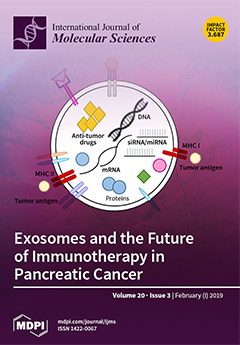Although phytohormones are known to be important signal molecules involved in wood formation, their roles are still largely unclear. Here,
Populus simonii ×
P. nigra seedlings were treated with different concentrations of exogenous phytohormones, indole-3-acetic acid (IAA), gibberellin (GA
3), and brassinosteroid
[...] Read more.
Although phytohormones are known to be important signal molecules involved in wood formation, their roles are still largely unclear. Here,
Populus simonii ×
P. nigra seedlings were treated with different concentrations of exogenous phytohormones, indole-3-acetic acid (IAA), gibberellin (GA
3), and brassinosteroid (BR), and the effects of phytohormones on growth were investigated. Next, 27 genes with known roles in wood formation were selected for qPCR analysis to determine tissue-specificity and timing of responses to phytohormone treatments. Compared to the control, most IAA, GA
3, and BR concentrations significantly increased seedling height. Meanwhile, IAA induced significant seedling stem diameter and cellulose content increases that peaked at 3 and 30 mg·L
−1, respectively. Significant increase in cellulose content was also observed in seedlings treated with 100 mg·L
−1 GA
3. Neither stem diameter nor cellulose content of seedlings were affected by BR treatment significantly, although slight effects were observed. Anatomical measurements demonstrated improved xylem, but not phloem, development in IAA- and BR-treated seedlings. Most gene expression patterns induced by IAA, GA
3, and BR differed among tissues. Many IAA response genes were also regulated by GA
3, while BR-induced transcription was weaker and slower in
Populus than for IAA and GA
3. These results reveal the roles played by phytohormones in plant growth and lay the foundation for exploring molecular regulatory mechanisms of wood formation in
Populus.
Full article






